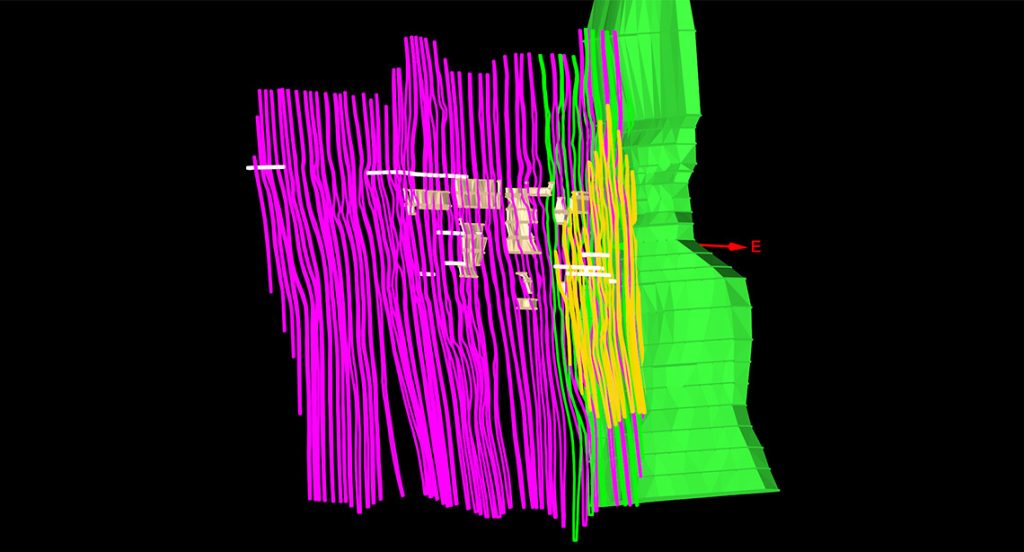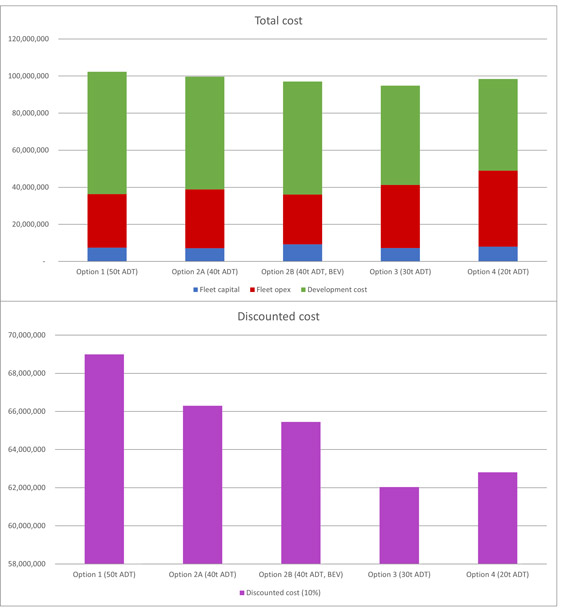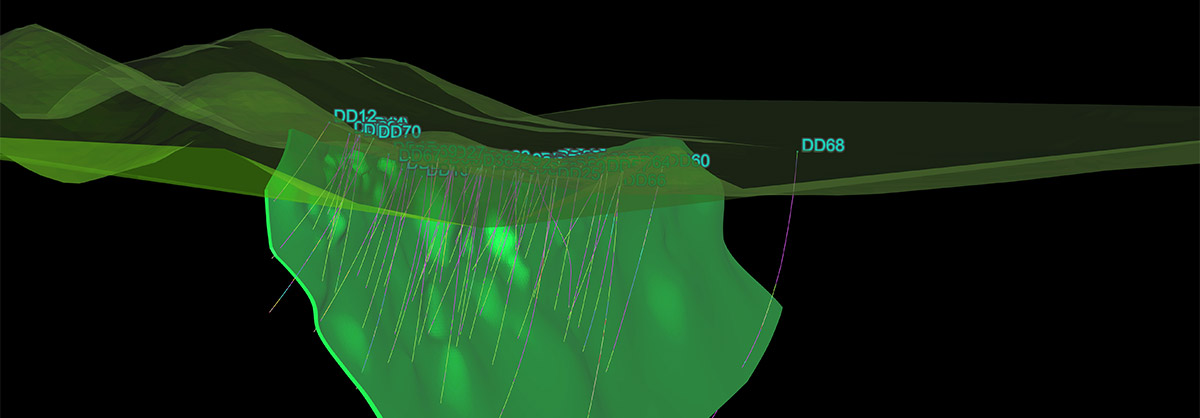September 2021 Issue Index
Mining narrow vein orebodies
New exploration and resource estimation tools designed for narrow vein deposits have created opportunities for low volume projects to thrive.
Bara Consulting Principal Mining Engineer Clive Brown says a resurgence in small mines has been driven by evolving attitudes, technology and techniques.
‘In the last few decades most mining companies have found it easier to finance bigger projects, and particularly the major mining companies have chased larger deposits,’ Brown said.
Section view of a narrow vein deposit exhibiting braided sinuous ore zones
Many smaller narrow vein deposits that have been discovered are also available for development. A number of factors have made mining these deposits more attractive using narrow vein underground methods.

The fact that many jurisdictions adopt a ‘use it or lose it’ policy means companies cannot indefinitely hold on to properties they are not developing. The deposits become available for junior project developers and mining companies that are more suited to low volume operations.
Environmental pressures on mining and the high cost of building, maintaining and rehabilitating large infrastructure footprints motivate the ‘tread lightly’ approach of smaller operations.
The availability of exploration and resource estimation tools specifically designed for narrow vein deposits, and a range of smaller underground mining equipment gives mining engineers flexibility in choosing the best approach.
Processing and tailings storage facility technologies that have developed around low volume operations are directly applicable to narrow vein mining, and novel mining methods will play a part in the future of the practice.
Selection of development fleet and excavation dimensions can have a significant effect on project capital and operating costs for narrower orebodies.
Smaller, narrow vein specific equipment and methods allow mechanised mining to be selective and cost-effective. A low volume approach can significantly change project metrics and viability.
Realising value
A gold project in East Africa, initially owned by a major gold company that completed a scoping study and found it to be unattractive, became more viable when its new owners considered a different approach.
In the initial scoping study the resource grade of 12.1g/t gold was diluted to a run of mine grade of 5.8g/t.
Mechanised open stoping was initially assumed, with large access excavations accommodating 50t trucks and a minimum mining width of 2.5m. A mining inventory of 4.95Mt at 5.8g/t Au was proposed and the production rate was scheduled at 490,000tpa.

Bara Consulting worked on a revised study commissioned by the new owners and traded off the mining equipment fleet and size, selecting a smaller suite which could work in a 4mx4m access ramp and drives.
Allocation of smaller equipment reduced the minimum mining width 1.5m. The mine was replanned and scheduled, resulting in a mining inventory of 3.16Mt at 7.9g/t Au scheduled at 400,000tpa.
The NPV of the project increased from US$8M to US$106M and operating costs dropped from US$1215 to US$612 per oz.
Complex geology
Narrow vein deposits generally exhibit complex geology, being associated with mineral veins or shear zones and featuring variations in continuity, dip, strike, width or mineralogy, which affects metallurgy downstream.
The veins are composite, so the grade of mineralisation is restricted into zones. Branches, intersections or braided zones, known as horsetailing, are common features and it is important to define the high grade ore shoots.
Data is traditionally collected through mapping, geophysics and geochemistry, trenching, drilling and sampling. This helps develop a picture of the deposit through longitudinal and horizontal sections.
These sections are used to interpret the orebody behaviour and are digitised before wireframes are generated. This repetitive and time-consuming process limits the time geologists have to solve problems and understand the geology.
Solids are created with straight lines between data points, resulting in unrealistic models inclined to be chunky and angular and not a true reflection of a deposit.
Maptek software and workflows can overcome these issues, providing a truer picture of narrow vein orebodies and releasing geologists to work on fundamental geology and analysis.
A comprehensive from–to dataset is added to a database, and mapping strings from geophysics, underground or surface mapping can supplement the information.
A dedicated Maptek narrow vein modelling tool quickly generates a model. This first pass provides an improved geological understanding and informs drilling and mapping targets. The new data is again fed through the narrow vein tool to quickly generate the resource model.
Automating a proven process with the narrow vein tool improves accuracy, allowing geologists to spend time focusing on other tasks such as monitoring drilling, core logging and investigating any unexpected results.
Results are delivered faster to management, investors and the market.
The fact that deposits remain that have been ignored by the major miners means smaller operations can capitalise.
‘Bigger is not always better. The future is bright for smaller volume quality orebodies if they are well planned and well managed,’ Brown concluded.
As more successful projects of this kind come online, the value of narrow vein specific exploration resource modelling tools and mining equipment will be reinforced.
Thanks to
Clive Brown
Principal Mining Engineer
Bara Consulting
Edited excerpt from Maptek Connect presentation, May 2021
- The resurgence of smaller volume mines has been made possible by a willingness to investigate alternative equipment and mining methods for efficient extraction
- Software and workflows help overcome issues with mapping and modelling narrow vein deposits exhibiting complex structures
- Automating a proven process allows geologists to focus on value-adding tasks such as interpretation and analysis of results

